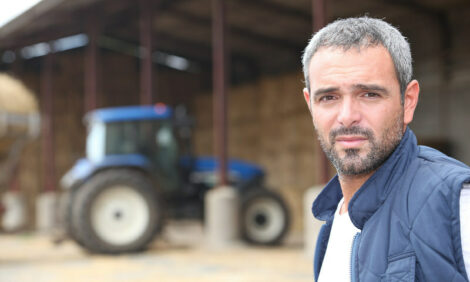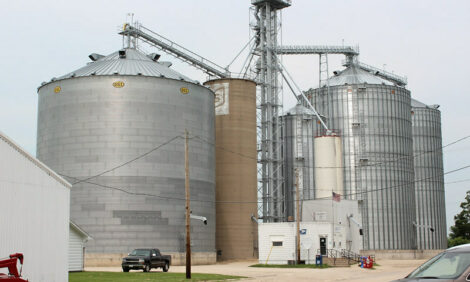



Moon Pig Project Aims to Produce Pigs in Sustainable, Environmentally Friendly Way
DENMARK - Denmark is a world leader in pig production and is always striving to improve the technologies associated with pigs. Over three years ago a small group of well known important Danish companies; Big Dutchman, Gråkjær, SEGES (Danish Pig Research) Skov and Tican, got together in a turn key project which aims to produce pigs in a sustainable environmentally friendly way, incorporating new state of the art technology which involved thinking outside the box, writes Stuart Lumb.This concept was christened the “Moon Pig” project, because getting the concepts from the drawing board to bricks and mortar was to be as difficult as putting a man on the moon.
The Moon Pig project was formally launched on the first day of the 2016 edition of AGROMEK, the biennial Danish livestock show, by Bent Claudi Lassen, former chairman of Dansk Slagterier, along with representatives of the companies involved in the project.
The stables will house 10,000 pigs from 30kg – slaughter, with an annual output of 40,000 slaughter pigs. Extra features incorporated into the project will add another 40DKr/pig to the cost of production and Danish Green Environmental fund GUDP will supply the extra finance.
It’s hoped the new project will exceed current environmental requirements and can be used as a blueprint for new finisher stables all over Denmark.
“In effect it will be the “Rolls-Royce” of piggeries” enthused Henrik Bækstrøm Lauritsen, Livestock Procurement Director for north Jutland based slaughter outfit Tican.
“The Moon Pig stables will be relatively close to our two slaughter plants which is ideal as we need the pigs. It takes at least a year to obtain planning permission for new stables here in Denmark and because the Moon Pig stables are located in an environmentally sensitive area planning has taken even longer, but its hoped that we can start in late 2017.”
Big Dutchman is one of the partners in the project. “We are supplying all the penning, which is low maintenance and easily cleaned” commented Big Dutchman’s Thomas Særkjæ.
"We are also providing the liquid feeding system and hygiene is very important. It will be a Double System. Whilst one day’s feed is being circulated and delivered the next day’s feed is standing in a large tank, allowing fermentation to take place."
Særkjær also added that with several companies providing different equipment it was vital that the IT interfaces were compatable.
“Skov has a big input into the Moon Pig project,” added Niels Henrik Lundgaard, Skov’s Product Manager.
“Ammonia is a big problem but scrubbing with 10 per cent of the ventilation capacity removes the ammonia. In fact all planning applications must include details of how ammonia is removed. There is a biological system which cleans the foul air and reduces emissions by 70 per cent.
Cameras which take surface area images to predict pig weight and used for growth monitoring will be part of the package. The cameras will also be used for assessing slaughter weights. Currently two cameras and softwear cost €3000 per house, however 3D cameras are now common place as part of computer games, hence these cameras are getting cheaper all the time and it will not be long before it will be cost effective to fit a camera in each pen.
Feed and water intake will be regularly monitored as irregularities are often an indication of an impending disease problem. Ammonia levels will also be monitored as there is thought to be a relationship between ammonia and tailbiting. Microphones will also be fitted in the stables to record how pigs communicate with each other, in order to monitor behavioural patterns and see what effect these have on pig performance.
The companies/organisations involved are Big Dutchman, SEGES (Danish Pig Research) Skov, Tican Fresh Meat, Gråkjær, Skovgård Agro Consult, Agrotech, LandboThy etc. Henrik Lauridsen is livestock procurement director for Tican.
The moon pig facility will be located quite close to one of Tican’s slaughter plants, hence Tican’s involvement with this exciting project. The initial discussions started three years ago and care was taken to involve all local organisations such as the local councils, the farmers union, Tican employees etc.
Minor planning alterations can take up to a year to be discussed and debated. The moon pig facility is sited in an environmentally sensitive area hence the planning process has taken much longer than usual, plus it has taken another year to resolve a specific planning issue.
In view of this the project start date has been put back to late 2017, with the actual building to be constructed by Gråkjær. Danish policy is now geared to encouraging more finishing pig production at home and the Moon Pig project will do just that.
The Moon Pig project is certainly a very exciting one and it will be great to see it when it finally becomes operational.
(The author wishes to thank Henrik Lauridsen for his generous help in the preparation of this article)








